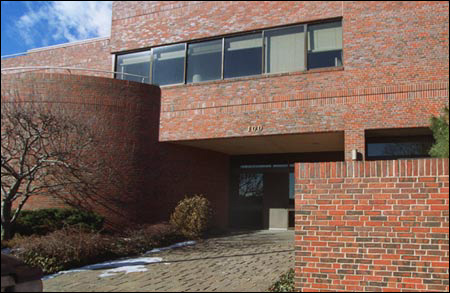Harvard celebrates merger with Rowland Institute:
Institute has built golden reputation as home for imaginative, interdisciplinary research

To the strains of a string quartet made up of Harvard students, the University, on Jan. 15, celebrated its merger with the famed Rowland Institute of Science.
The institute has built a golden reputation as the home for imaginative, interdisciplinary research by individual and small groups of scientists. Lene Hau, Gordon McKay Professor of Applied Physics and Professor of Physics, stopped light there two years ago. It’s the kind of place where scientists have pursued research not quickly funded by established agencies. Philip DuBois, former president of Rowland and a Harvard graduate, referred to experiments there as doing “impossible work with important results.”
Harvard President Lawrence H. Summers emphasized that the union is “not an acquisition but a merger and one of the most significant in the University’s history.” He noted that in the age of big science where experiments often involve dozens or even hundreds of scientists, Rowland made its reputation with individuals who pursued unpopular ideas. “As in the past, we cannot predict what experiments will be done here,” Summers noted. “But we can be sure they will make a large difference and lead to practical applications we can’t imagine today.”
Now renamed the Rowland Institute at Harvard, it occupies a 110,000-square-foot building in Cambridge overlooking the Charles River. From its airy atrium and veranda, you can see the gold dome of the state capitol in Boston. The union fits nicely with Summer’s stated goal to expand both space and faculty devoted to fundamental and applied research in the sciences.
The actual merger was agreed to in April of last year, but Wednesday’s celebration marked the end of detailed negotiations about how the Rowland would become part of Harvard’s Faculty of Arts and Sciences.

A polarizing story
Edwin H. Land, prolific inventor, founder of the Polaroid Corporation, and generous benefactor of Harvard, established the Rowland Institute in 1980. He is carried on the books as a member of Harvard’s class of 1930, and he did enter as a freshman in 1926. But Land left after one semester to work on his idea for a new method of polarizing light. He returned in 1928 not so much to attend classes but to do experiments in a small laboratory space provided by Professor Theodore Lyman.
As a 22-year-old junior, Land made a bit of Harvard history by becoming one of the few, if not the only undergraduate, to address a Department of Physics colloquium. During the lecture he announced his invention of “a new polarizer for light in the form of an extensive synthetic sheet.”
Impatient to apply his research results, Land left Harvard in the middle of his senior year to form the predecessor of the Polaroid Corporation, which made polarizing sunglasses, photographic filters, and viewers for three-dimensional movies, and later, optical equipment for the military. He kept a close connection with Harvard and received an honorary degree from the University in 1957.
When he retired in 1980, Land founded the Rowland Institute which sits on a street now named Edwin H. Land Boulevard. For 23 years, the facility has provided a mostly distraction-free environment and unique culture for interdisciplinary development of both science and scientists, notes William Kirby, dean of Harvard’s Faculty of Arts and Sciences. Several prominent University researchers have used its laboratory facilities recently, including Lean Hau; Howard Berg, who studies the movements of bacteria and other microbes; Jene Golovchenko, who built very high-resolution microscopes there; and Markus Meister, who does basic research on vision.
Frans Spaepen, Franklin Professor of Applied Physics, now serves as director of the institute. He described a new junior fellows program that has been established. Active recruiting is underway to select about 10 young researchers who will be able to work on their own ideas for five years without the worry of writing proposals to solicit funding for their research. Spaepen calls the program “an incubator for talent that Dr. Land would be very excited about.”




